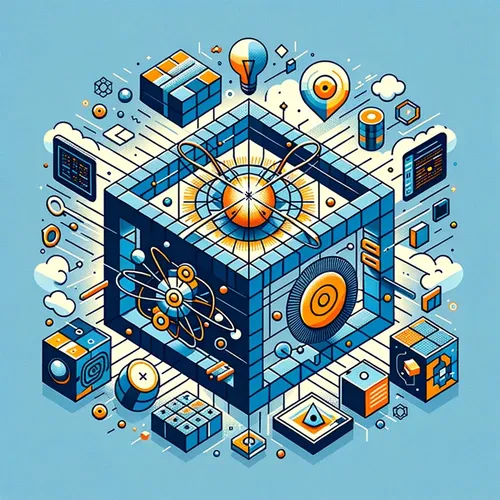AMD and IBM's Quantum-Centric Supercomputer: The Hybrid Future of Computing
- Author
- Quiet. Please
- Published
- Sun 31 Aug 2025
- Episode Link
- https://www.spreaker.com/episode/amd-and-ibm-s-quantum-centric-supercomputer-the-hybrid-future-of-computing--67571908
This is your Quantum Computing 101 podcast.
A few days ago, news broke that AMD and IBM—two titans from very different computing worlds—are joining forces to build what they call a quantum-centric supercomputer. For those of us in the quantum trenches, this isn’t just another collaboration; it’s a seismic shift. I’m Leo, your resident Learning Enhanced Operator here on Quantum Computing 101, and today I'm diving deep into the most cutting-edge hybrid quantum-classical solution making headlines right now.
Let’s get right to it: the future isn't quantum or classical. It’s *hybrid*—and this alliance proves it. AMD, known for powering the world's biggest supercomputers, now brings its CPUs, GPUs, adaptive FPGAs, and AI networking hardware directly to the quantum table. On the quantum side, IBM supplies its rapidly advancing QPUs—quantum processing units. Their strategy? Not just connecting a quantum machine to a supercomputer, but weaving them together, so that each part does what it does best. Imagine a relay race where each runner brings a unique, game-changing talent.
Picture this: molecular simulations that used to grind classical computers for weeks are now split up. The quantum computer handles what nature intended—manipulating quantum information to simulate molecules and atoms. Meanwhile, the HPC system powered by AMD chews through vast datasets, trains AI models, and manages real-time error detection, a crucial piece as we battle quantum noise and decoherence. Classical systems act like the conductor, orchestrating the whole performance, translating high-level code into quantum instructions, and crunching results with brute force scale—all at blazing speeds.
Most dramatically, they’re working on tightly coupling these systems with sub-millisecond round-trip latencies, making real-time quantum error correction and hybrid algorithm feedback loops possible, even as hardware evolves. Think of it as quantum-classical symbiosis: a living, breathing system that adapts in real-time to challenges, as complex as any ecosystem found in nature.
In the past week, researchers have also showcased linking multiple quantum chips into one fault-tolerant system, even when the connections themselves are noisy. This is a real-world proof that with clever hybrid architectures—mixing robust classical scheduling and flexible quantum hardware—we don’t have to wait for “perfect” quantum chips to start scaling. Progress accelerates, piece by pragmatic, hybrid piece.
Broader implications? Hybrid systems are a map for our times: no one discipline, perspective, or technology solves everything alone. Whether it’s quantum bits in a cryogenic chamber or experts from worlds apart, integration is our path to invention.
Thanks for joining me on this journey through the new hybrid frontier of quantum computing. If you have questions or want a topic discussed on air, send an email anytime to [email protected]. Don’t forget to subscribe to Quantum Computing 101, and check out Quiet Please dot AI for more. This has been a Quiet Please Production—where we make sense of the quantum whirlwind, one episode at a time.
For more http://www.quietplease.ai
Get the best deals https://amzn.to/3ODvOta
